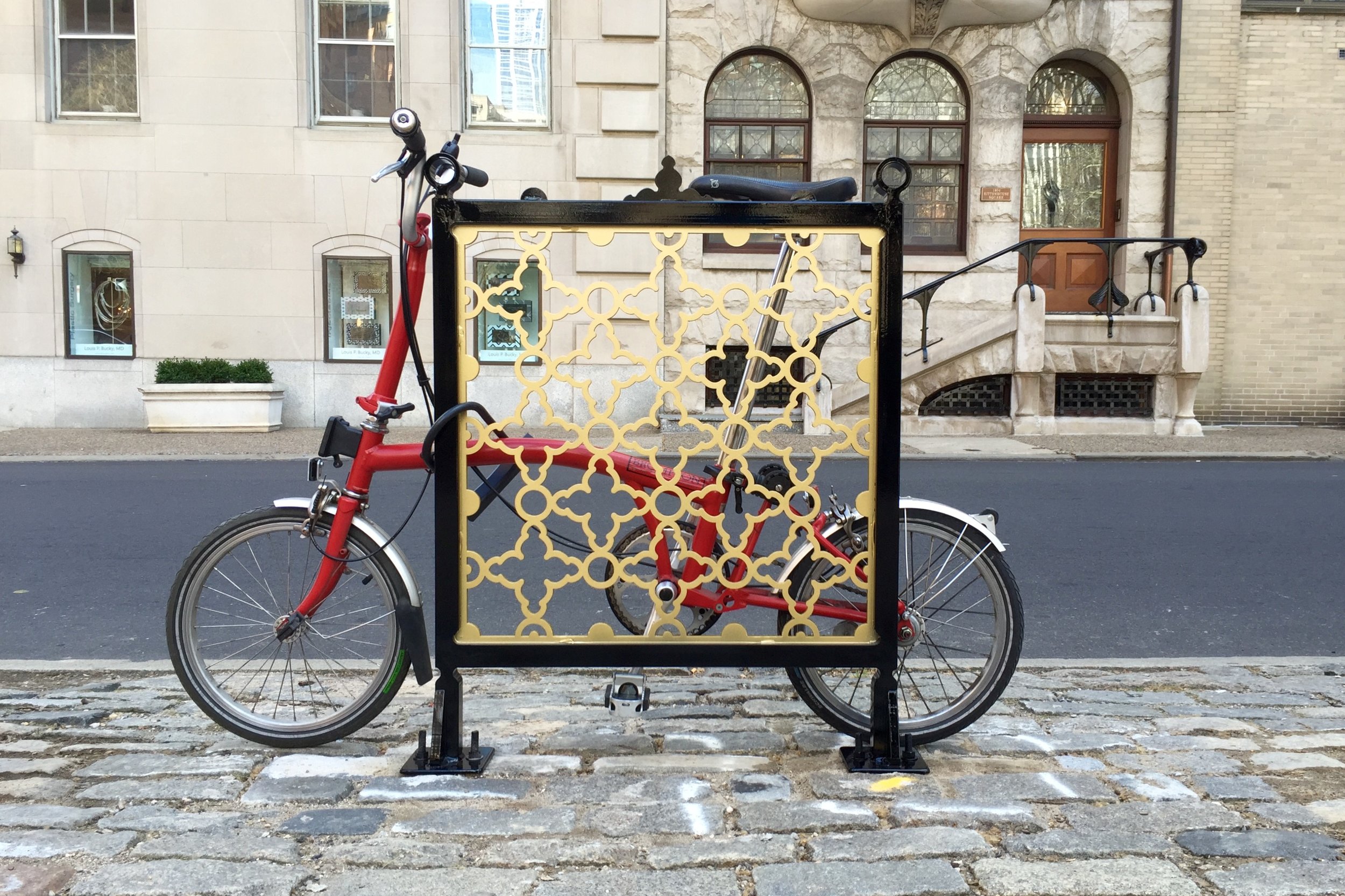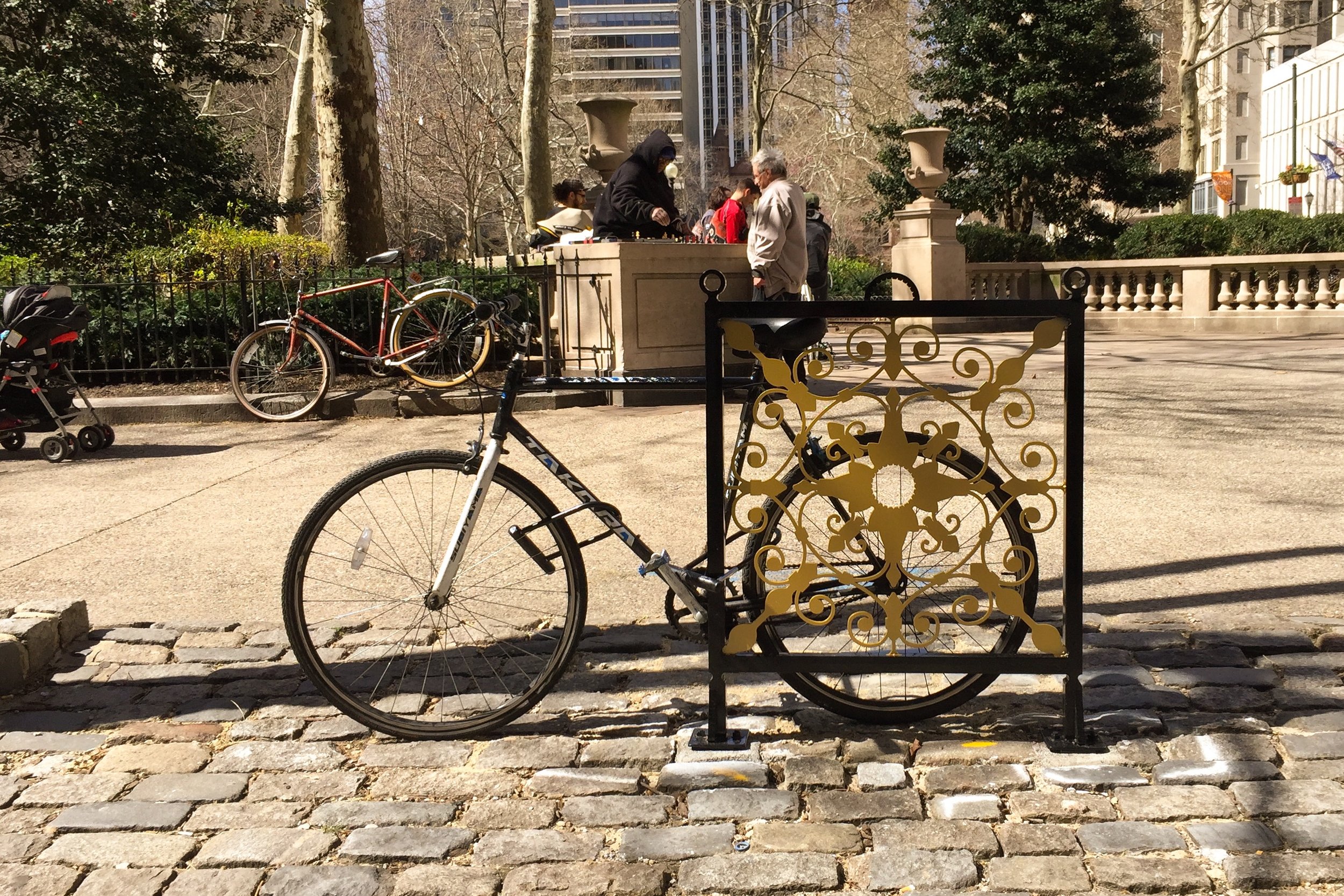GILDED GATES The Gilded Gates celebrate Philadelphia’s legendary ironwork and provide security for bicycles. The painted metallic gold, water-jet cut filigree set inside the solid steel black frame showcases the City’s ironwork legacy, and reinforces the historical urban value and site contexuality of the project.
Using historic documentation and modern technology, forgotten ironwork patterns are reborn to serve as urban edges with a functional twist. Artisans like Samuel Yellin, Frank Furness, John Haviland and Horace Trumbauer designed magnificent ironwork in Philadelphia that has been collected and preserved in art institutions across the nation. Their creative output, coupled with the past three centuries of urban metal work, gave the City a decoratively appealing, yet functional, edging. Throughout the past 300 years, the City has lost much of its ironwork edge, so to speak, due to poor maintenance, neglect, theft or sale. Often, the urban edges once defined by ironwork have lost their demarcation, or are redefined in pragmatic chainlink. This project returns the decorative glory that has defined the edges of our City for generations.
Gilded Gates abstracts traditional ironwork patterns into a contemporary form, giving each rack site contextuality and meaning. Furthermore, the patterns delight the eye and, when mingled with the secured bicycles, cast shadows that create a fascinating complexity and decoration upon the sidewalk. Additionally, the scale of each rack and its finish recall vernacular bike racks, therefore eliminating cyclist confusion over a new urban amenity. Although it is an obvious bike rack, it avoids the kitsch factor of an over scaled, one- liner, literal object outline.
In addition to its appealing form and site contextuality, the internal filigree within the black frame can change per site with little cost adjustment, providing the possibility of a diversity of racks throughout the City, and thereby showcasing more lost ironwork. Five examples of the many rack possibilities and lengths are proposed here. Doubling or tripling each module creates a larger rack and further accommodation for bicycles.
The welded black framework provides a consistent outline to all of the mounted racks and ample security for locking. Additionally, the circular rings at the top corners allow locking cables to pass through them. Perhaps more appropriately, the rings provide an ideal place to tie a dog leash for a quick visit to a local shop, making it ideal for the cyclist or the pedestrian with a pet in tow.
Gilded Gates also provide innate psychological security to their users. When polled, most cyclists prefer to lock their bicycles either to street signage or railings. Building owners tend to frown upon bicyclists using their entryway railings as racks. The Gilded Gates subvert that culture and provide an alternative.
The Gilded Gates encapsulate all that is compelling about Philadelphia– its history, craft, scale and complexity.









